Discover 9 Indian Landscapes Through Modernist Lens
India’s rich and diverse topography has served as inspiration for artists throughout time. With awe-inspiring sites and landforms ranging from...
Guest Profile 4 July 2024
Marie Skłodowska-Curie is arguably the most famous female scientist in history and one of the most accomplished scientists ever. Since she was a girl, she had to fight the sexist policies that prevented women from getting into academia. Despite all that, her work led her to win not one, but two Nobel Prizes and dozens of honorary titles, memberships, and awards throughout her life. Thankfully, there are numerous photographs that documented her entire life. Let us take a look at some of them.
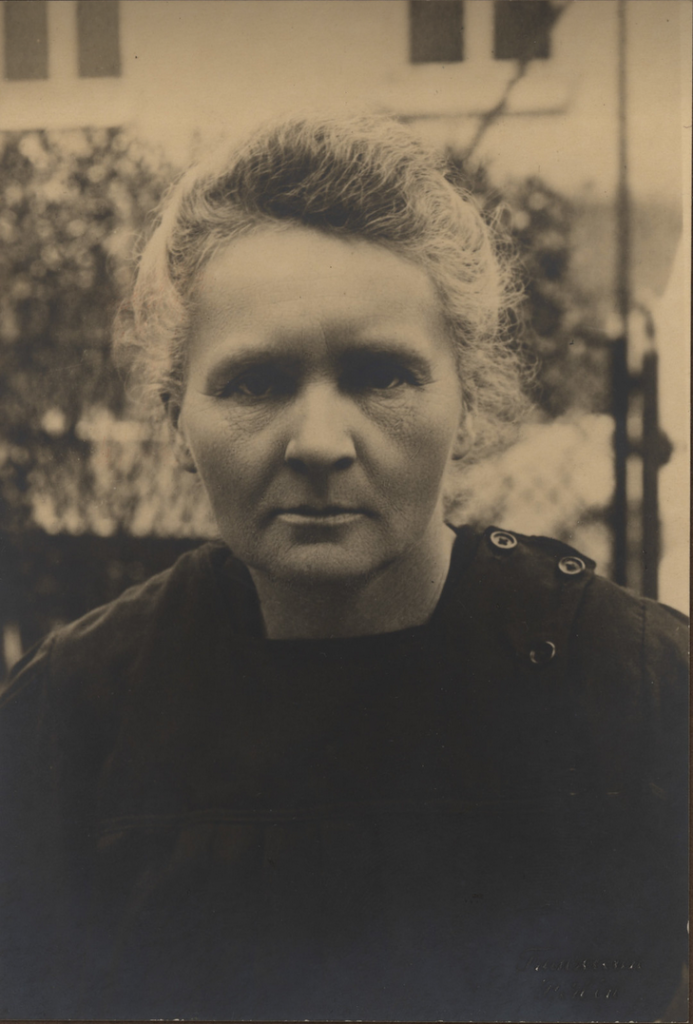
Portrait of Marie Curie, c. 1934, Smithsonian Libraries and Archives, Washington, DC, USA.
Marie Curie (née Maria Skłodowska) was a Polish scientist born on November 7, 1867, in Warsaw, Poland. At the time, that part of the country belonged to the Russian Empire, which restricted education for women. However, her father inspired in her an interest in science so she attended a secret Polish institution, the Flying University. In 1891, she moved to Paris, France to continue her studies at Sorbonne and obtained a degree in Physics and the Mathematical Sciences. There, she met Pierre Curie, who was a professor of physics, and later married him. Together they worked on radioactivity, discovered by Henri Becquerel in 1896.
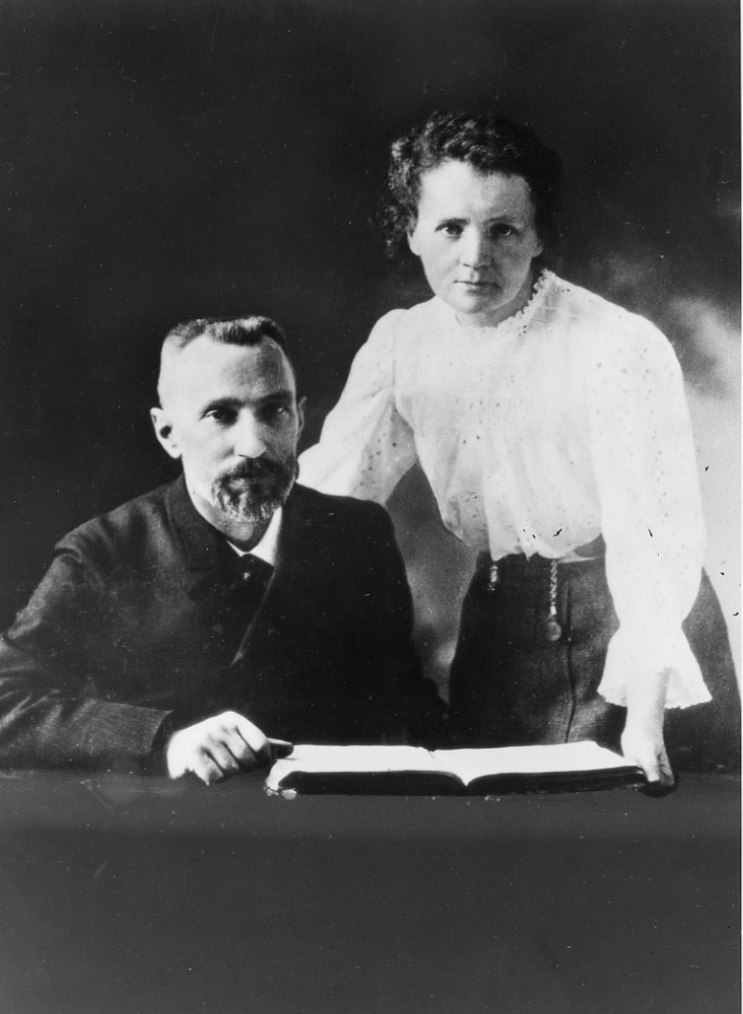
Pierre Curie and Marie Skłodowska-Curie, c. 1903, Smithsonian Libraries and Archives, Washington, DC, USA.
The Curies’ research led them to discover two elements: polonium (named after Curie’s homeland) and radium. For this, they received one-half of the Nobel Prize for Physics in 1903 and the other half went to Becquerel. There are several portraits like the one below of the couple at work. Here, she is demonstrating one of their experiments.
Unfortunately, Marie Curie became a widow in 1906, as Pierre died in an accident (and interestingly, not directly due to their scientific work, although he already showed signs of illness).
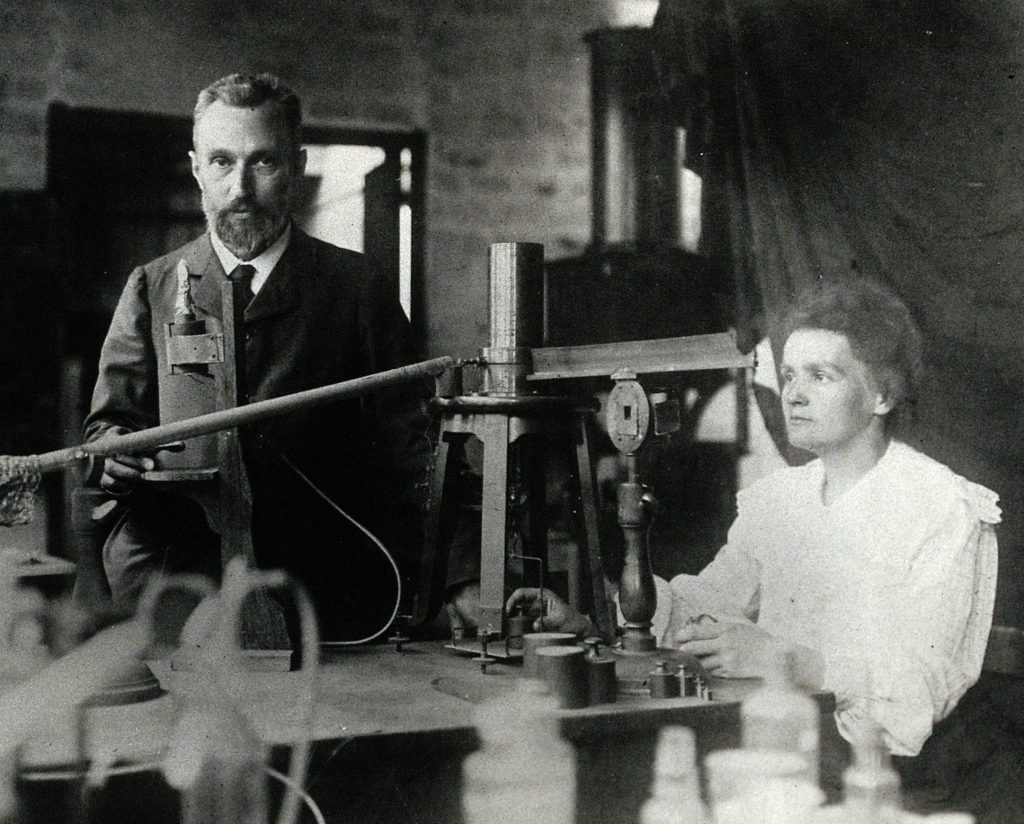
Marie and Pierre Curie in the laboratory, c. 1904. Wikimedia Commons (public domain).
Marie Curie outlived her husband for 30 years. During that time, she continued working with radioactivity and putting it into practice in medical practices. She developed the X-rays, which became crucial to treat soldiers with fractures and other injuries during World War I. Curie did not stay in the laboratory; she actually went to treat the patients. In the photo below, she stands next to her daughter, Irène, and their equipment.
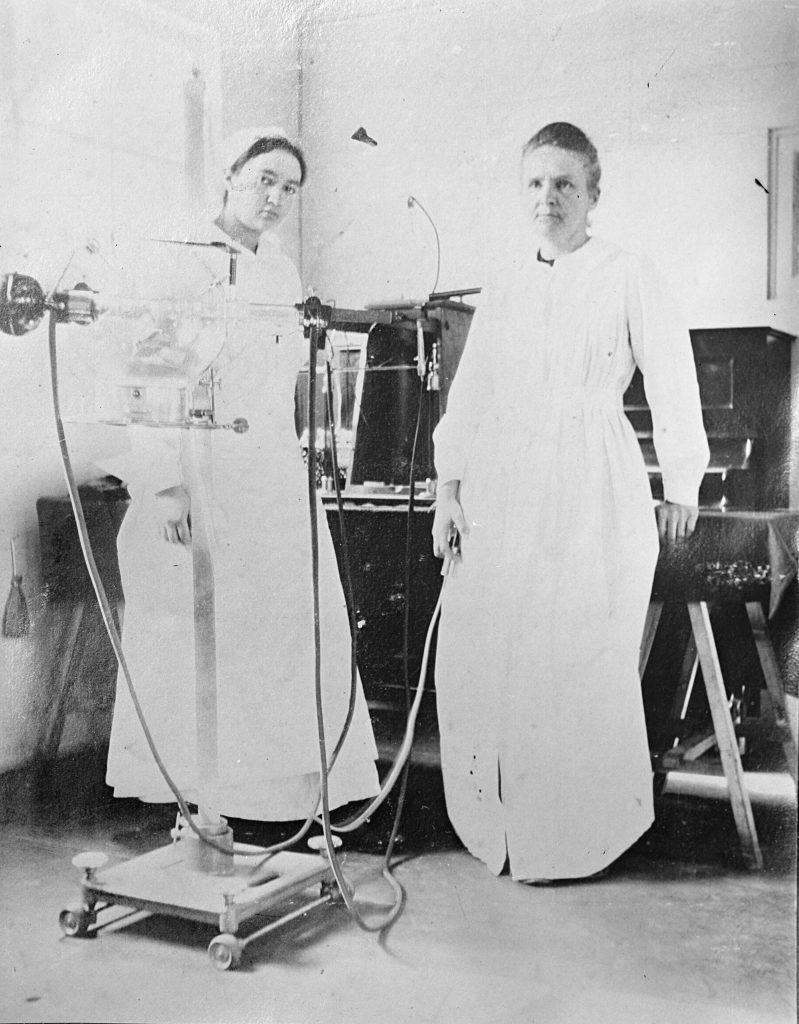
Irène and Marie Curie surrounded by X-ray machines installed in a pavilion at the Hoogstade hospital in Belgium, 1915, Musée Curie, Paris, France.
This next one shows her driving a “Little Curie,” as people called her mobile X-ray units.
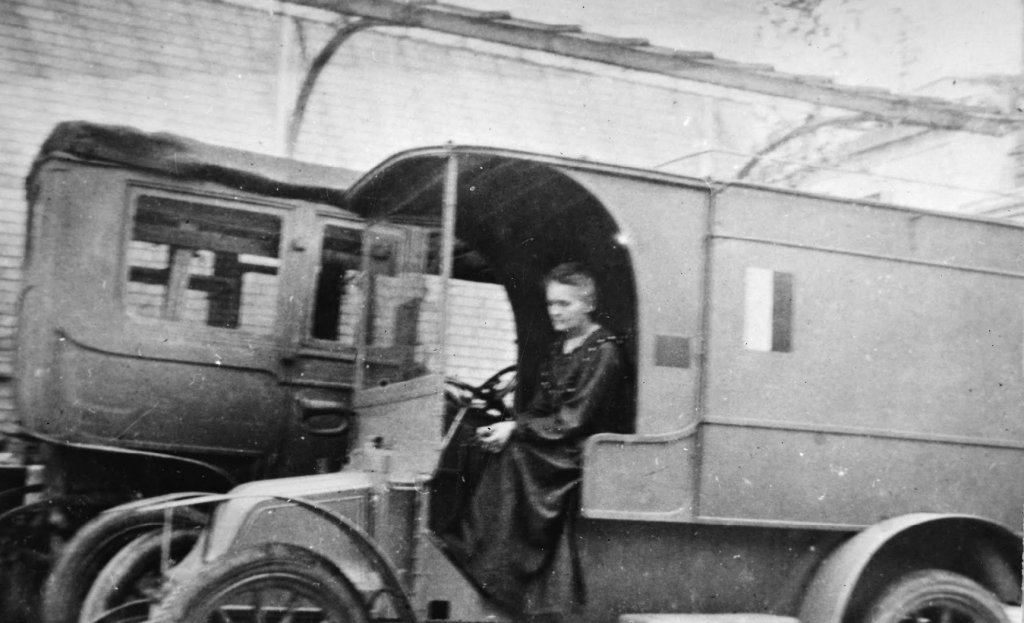
Marie Curie driving a “Little Curie,” 1917, Musée Curie, Paris, France.
Despite the times, Marie Curie gained recognition among her peers. The picture below is from the Conference of Solvay of 1927. She is seated in the front row, on the third seat, from left to right. Notice that she is the only woman in the photograph.

Benjamin Couprie, 1927 Solvay Conference on Quantum Mechanics, 1927. Wikimedia Commons (public domain).
As if winning one Nobel Prize was not enough, Marie Curie won the second one in 1911, this time in Chemistry. The next portrait was taken around the same time. She was the first person and the only woman to receive two Nobels (only three more people joined her). Moreover, she is the only person to win a Nobel Prize in two separate fields.
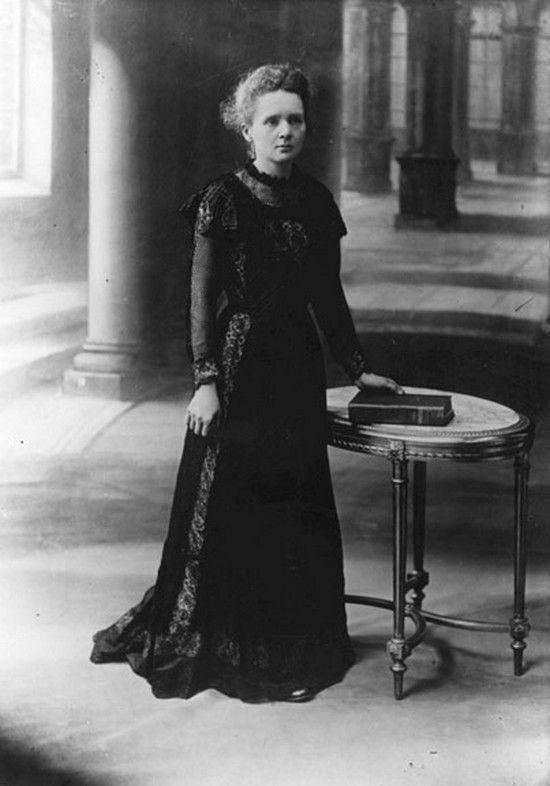
Photo of Marie Curie, c. 1911, Musée Curie, Paris, France.
Other photographs show us another facet of her life, that of a mother. Marie and Pierre Curie had two daughters, Irène and Ève. She was deeply involved in their education even when she had spent time away from them to conduct her research.
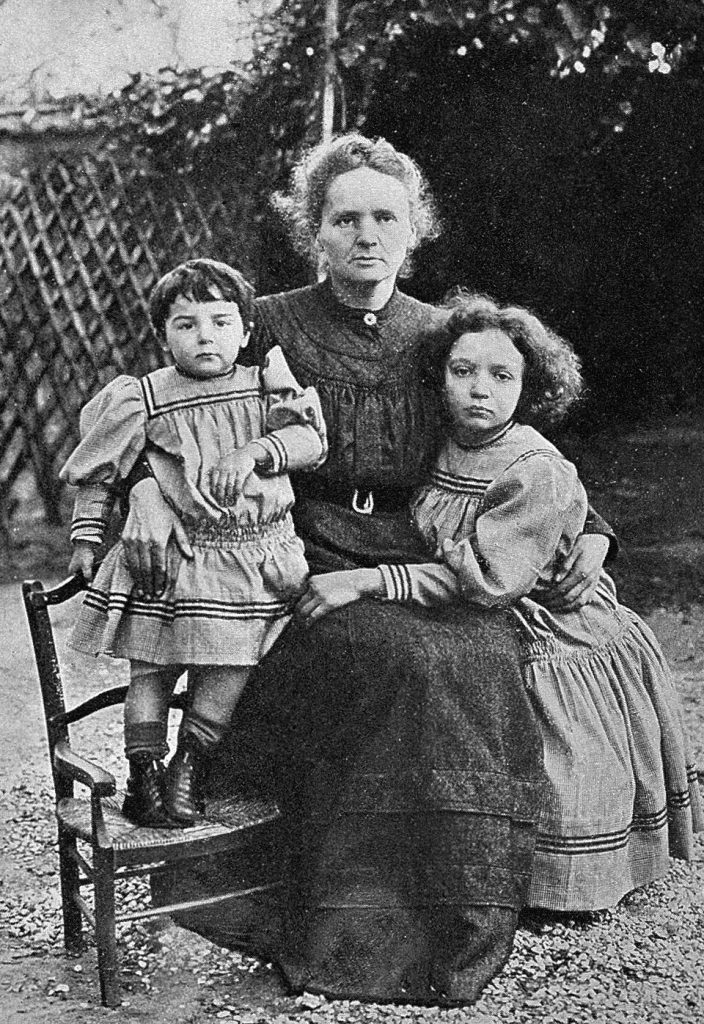
Portrait of Marie Curie and her daughters, 1908, Wellcome Collection, London, UK. Wikimedia Commons (public domain).
There are several photographs where Irène is working with her mother, such as the one below.
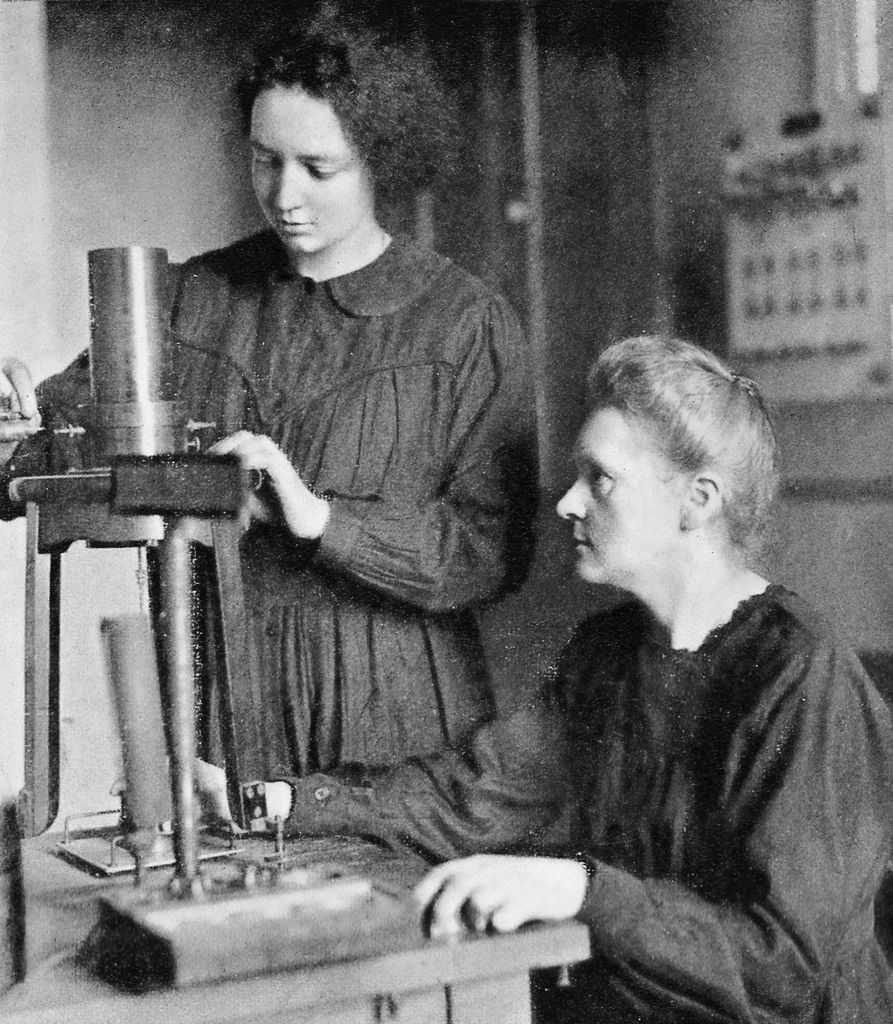
Marie Curie and her daughter, Irene, 1925, Wikimedia Commons (public domain).
The photograph below is the most common image of Curie. She posed with her scientific equipment at the Institute of Radium in Paris, France.
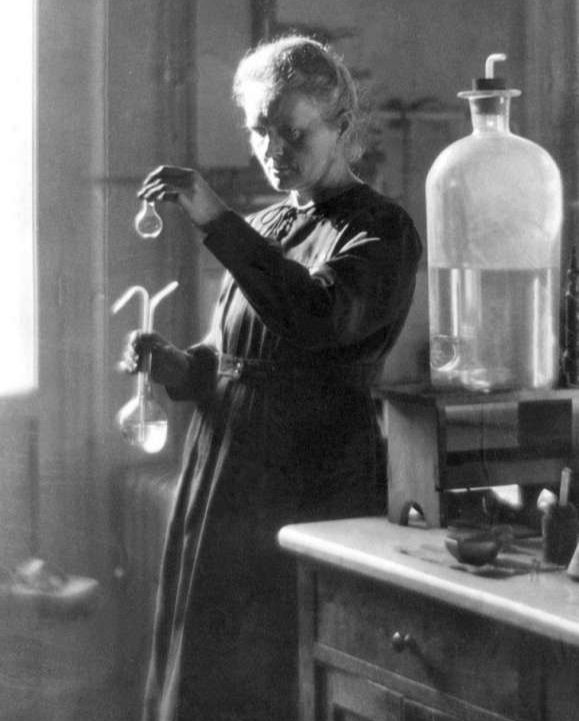
Marie Curie in her laboratory of chemistry in the Institute of Radium of Paris, 1921. Genial.ly.
Famously, Marie Curie died of aplastic anemia due to her continuous exposure to radiation in 1934. Today, she continues to be an inspiration for thousands of young girls who love science. Moreover, together with her husband Pierre, she started a scientific dynasty that continues today. Irène Curie-Joliot won the Nobel Prize in Chemistry in 1938 for her discovery of induced radioactivity. And, just like her mother, she won it in collaboration with her husband, Frédéric Joliot. Even more, their children Helen and Pierre are scientists today working in nuclear physics and biology, respectively. As for Ève, she opted for a career far away from science and preferred the humanities and social sciences. Nevertheless, her career was no less impressive. She honored her mother by writing her biography, Madame Curie.
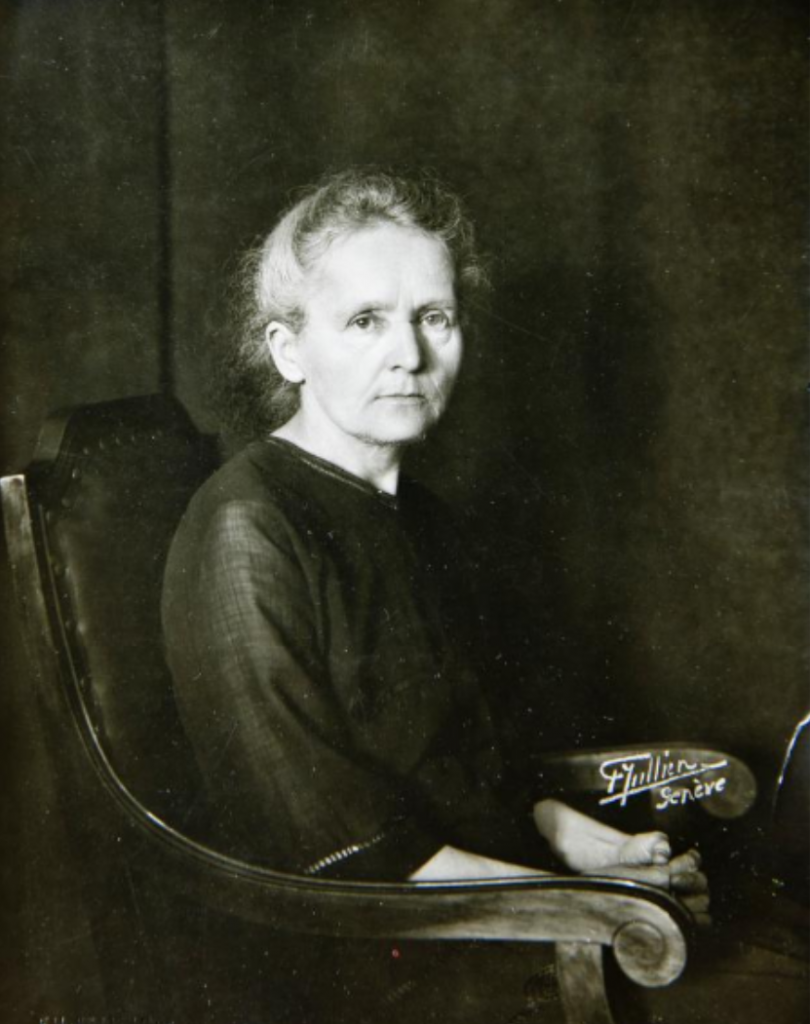
Frank Henri Jullien, Marie Curie, 1922, Library of Congress, Washington, DC, USA.
Luckily, there are many more portraits to explore Curie’s life. The Musée Curie counts with an outstanding collection of photographs and other documents of the scientist.
Kat Eschner: Three Quirky Facts About Marie Curie, Smithsonian Magazine, Nov 7, 2017. Accessed 15 Jan. 2023.
Marie Curie Facts, The Nobel Prize. Accessed 15 Jan. 2023.
Musée Curie: Discover the Incredible Life and Work of Marie Curie, Google Arts & Culture. Accessed 15 Jan. 2023.
DailyArt Magazine needs your support. Every contribution, however big or small, is very valuable for our future. Thanks to it, we will be able to sustain and grow the Magazine. Thank you for your help!